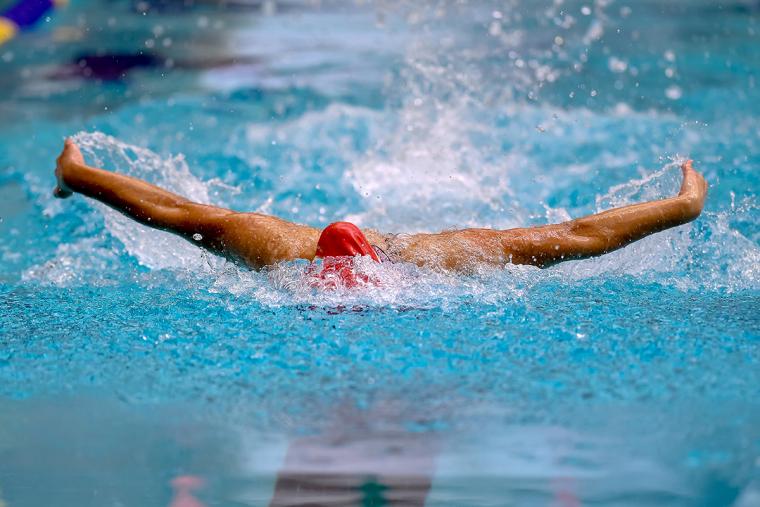
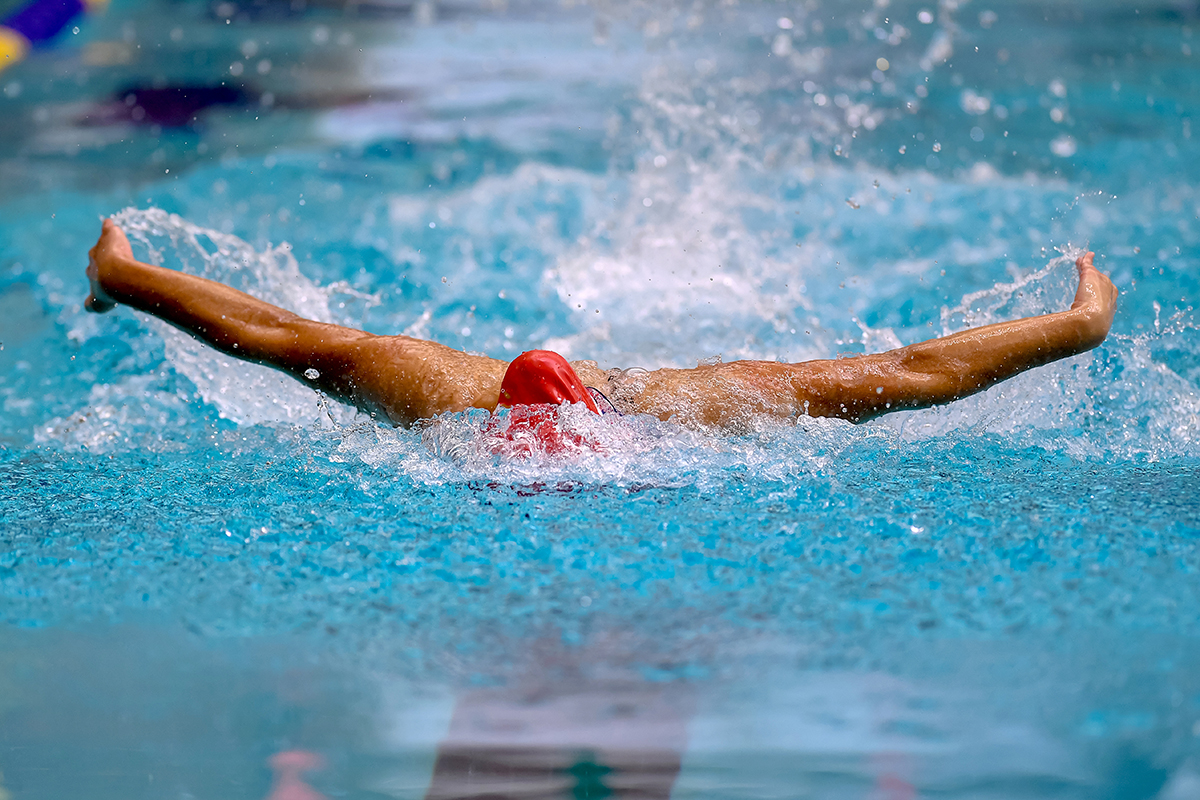 This past fall, the fourth pool at the massive Greensboro Aquatic Center in North Carolina opened, making the facility the largest of its kind in the country and a prime venue for regional, national and international meets.
This past fall, the fourth pool at the massive Greensboro Aquatic Center in North Carolina opened, making the facility the largest of its kind in the country and a prime venue for regional, national and international meets.
The $8.3 million, 27,000-square-foot addition was funded by hotel occupancy revenues and provides a 50-meter practice pool with 19 short course and eight long course lanes to complement a 50-meter stretch competition pool with 22 short course and eight long course lanes, a 25-yard warm-up/cool-down pool with six lanes, and a 25-yard diving well with six swimming lanes and diving apparatus for 10, 7.5, 5, 3 and 1 meters. Seating capacity is 2,500.
The newest pool will serve seven local swimming, diving and water polo teams, as well as provide additional space for community-based exercise, fitness and aquatic therapy classes; swimming and water safety lessons; and general recreational swimming. It also will allow the GAC (as the locals call it) to host larger competitive events, including the YMCA of the USA’s National Short Course Swimming Championship in 2021, 2022 and 2023, and its National Long Course Swimming Championship in 2020 and 2021.
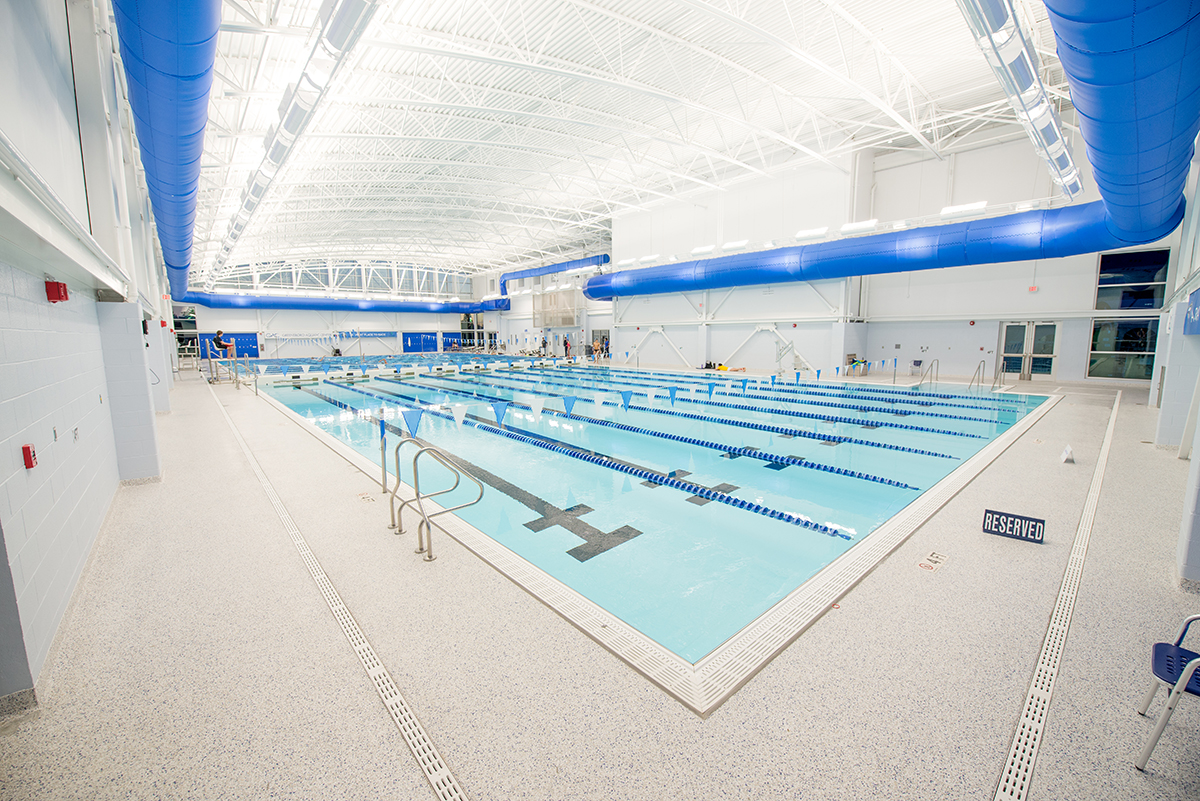
“We were hosting so many meets that it was beginning to seriously impact the pool time for the club teams that practice here year-round,” says Susan Braman, director the Greensboro Aquatic Center. “The YMCA has never awarded short and long course championships together to the same facility, and that is a direct result of our addition. We also have interest from USA Swimming for some national and international championships.”
The GAC is bidding to host a new cycle of NCAA championships, too, on top of already welcoming the 2020 NCAA Division III Swimming and Diving Championships and the 2021 NCAA Division I Women’s Swimming Championships. The facility also hosts multiple college conference meets.
Since the GAC opened in 2011, it has generated an economic impact of $150 million, according to the Greensboro Area Convention & Visitors Bureau, and the facility stands as a shining example of the increasing importance aquatics facility operators place on successfully serving both the sports tourism market and their local communities.
The GAC might be the biggest, but it’s far from the only facility taking that approach. Nationally, cities are stepping up their game with better equipped and more extensive venues for competition.
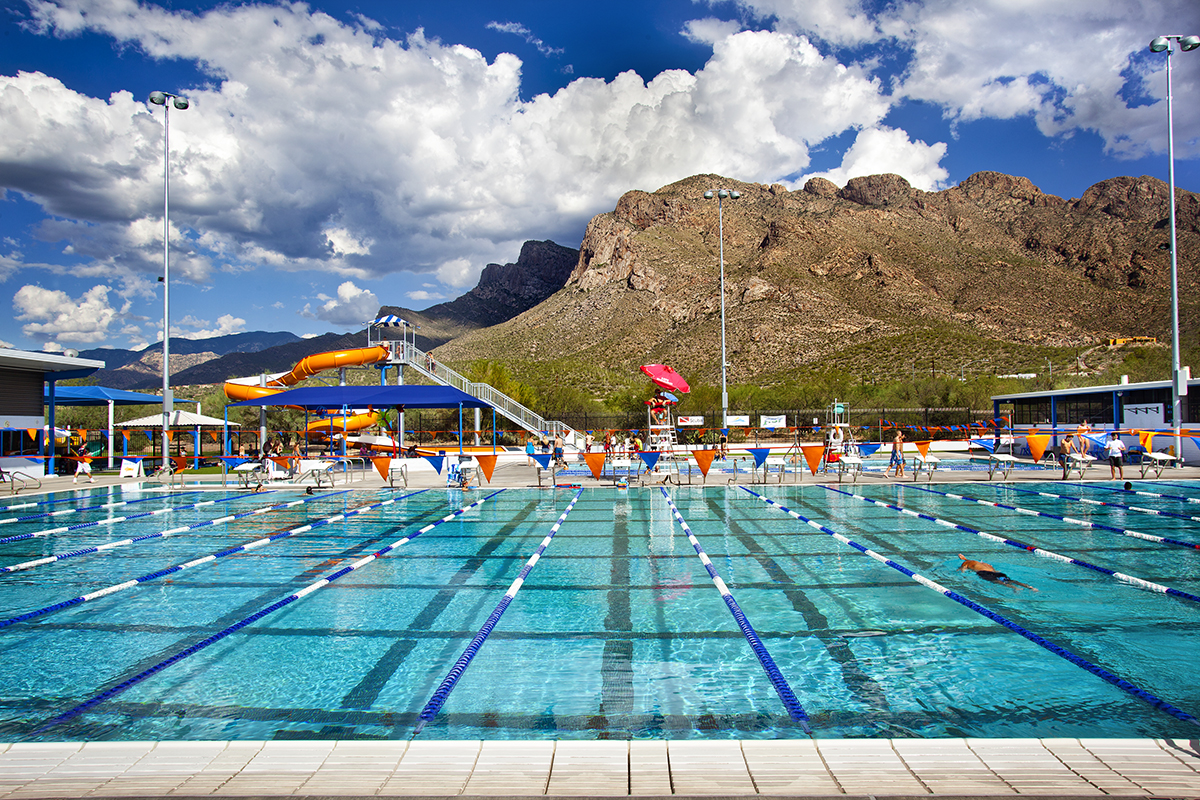
Tucson, Arizona
The Oro Valley Aquatic Center, located in a suburb of Tucson, offers an Olympic-size pool with 18 short course lanes and eight long course lanes, two 1-meter and two 3-meter diving boards, a 30-person classroom and a shaded area that holds up to 50 people.
“Swimming and synchro are the main sports there,” says Luchie Javelosa, sports sales manager for Visit Tucson Sports, adding that the venue hosted the 2018 U.S. Paralympics National Para Swimming Championships and the 2018 USA Synchro Collegiate Championships, as well as the 2016 USA Synchro Masters Championships, the 2014 and 2017 USA Synchro National Championships and regional water polo tournaments. It also will host the 2020 Arizona Swimming Age-Group Long and Short Course State Championships.
“We’ve been working with U.S. Paralympics to see if we can bring back the National Para Swimming Championships,” Javelosa says. “We are trying to grow our diversity.”
The University of Arizona houses what is considered the nation’s largest and most successful adaptive sports program, and the university’s Hillenbrand Aquatic Center recently underwent a $13 million renovation that makes it one of the nation’s top outdoor swimming and diving facilities, Javelosa adds. It offers eight long course lanes, 22 short course lanes and diving apparatus for 10, 7.5, 5, 3 and 1 meters. It also provides grandstand seating for up to 600 spectators.
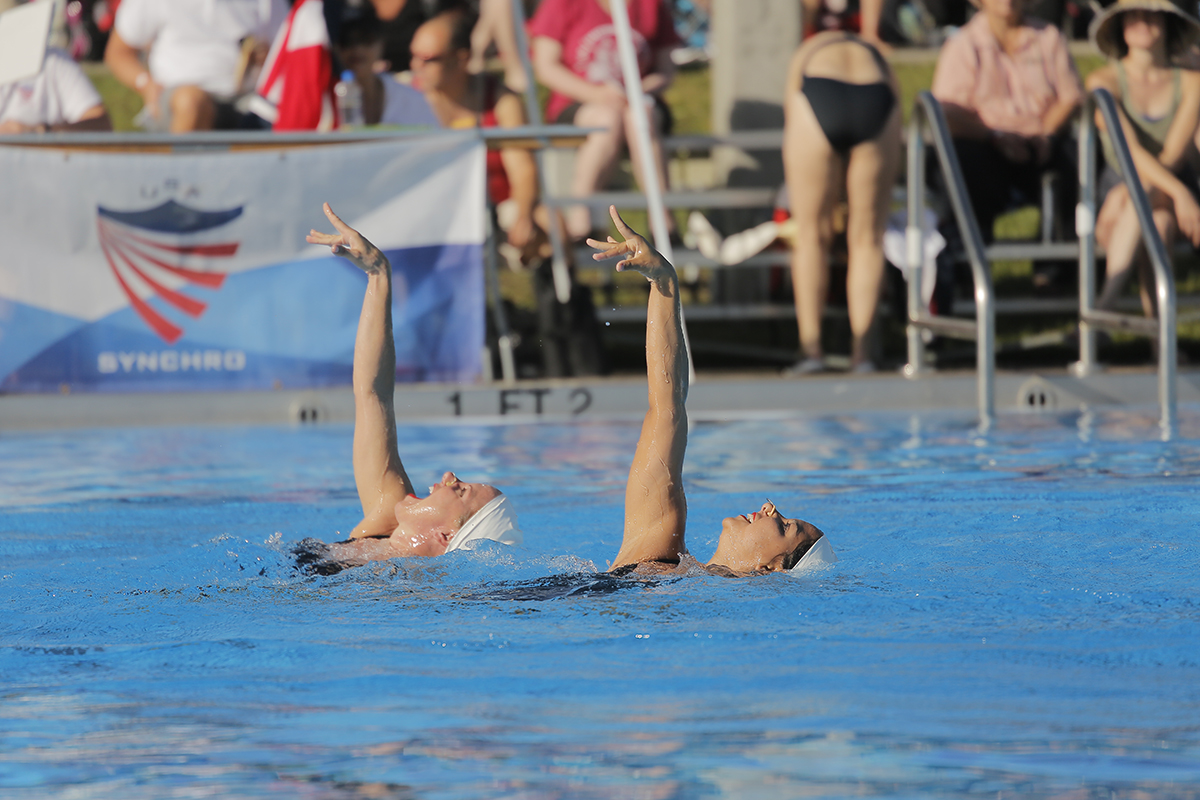
The Orlando Health National Training Center (OH-NTC) offers a wide variety of swim programming not only for residents living in or near Lake County, but also for competitive swimmers.
In 2019 alone, the facility, featuring a 70-meter-by-25-yard outdoor heated pool with 23 short course lanes and 10 long course lanes, hosted 25 out-of-state swim teams and 60 triathlon groups for training, according to Kim Couch, director of the National Training Center at Orlando Health South Lake Hospital. It also is the only long course swimming facility in Lake County and one of just a few available for training in central Florida.
The pool underwent a major renovation in 2017 during which crews replaced the liner and sand filters, updated the lighting, repaired the gutters and moveable bulkhead, and installed new starting blocks, The upgrade has allowed for 20 percent more lane space during long course training, and the addition of chillers will allow the complex to host more swim meets throughout the summer months.
“The majority of the hosting at OH-NTC is collegiate, high school, club and federation warm-weather training trips for swim teams, as well as triathlon training for individuals or teams,” Couch says, adding that recent visiting teams included the City of Manchester Aquatics Swim Team (England) and the Marlins Swimming Club (Ireland).
The center’s own USA Swimming club team, the NTC Lightning, is hosting two last-chance meets in 2020, giving swimmers a final shot at qualifying for championship meets, and the facility also hosts the annual Karen Hohne Invitational, which attracts teams from Florida and other states.
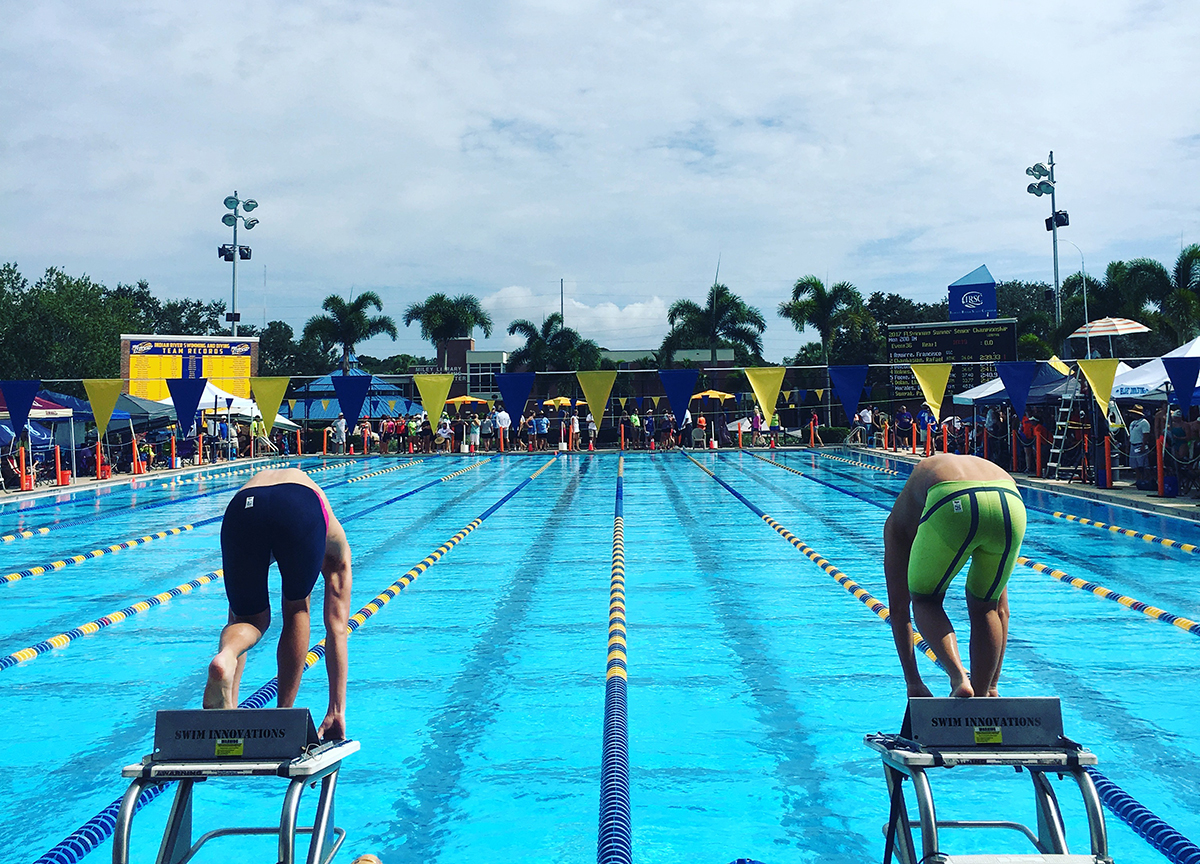
Elsewhere in Florida, the Treasure Coast region — which comprises Indian River, St. Lucie and Martin counties on the state’s Atlantic Coast — offers three competitive aquatics facilities.
“That number emphasizes just how important swimming and diving are in this community,” says Ryan Strickland, director of business development and marketing for the Treasure Coast Sports Commission.
Sailfish Splash Aquatic Center in Stuart boasts an Olympic-size pool that supports USA Swimming and NCAA short course and long course events. It features two 3-meter and two 1-meter diving boards with a 13.5-foot diving well and a 25-yard warm-up pool. The facility is a popular winter training destination for college teams, and it hosts state high school meets, U.S. Masters Swimming events, and water polo and synchronized swimming competitions.
Meanwhile, the North County Aquatics Center in Sebastian offers 18 lanes and a moveable bulkhead, and it hosts swimming competitions for Special Olympics Florida. The Anne Wilder Aquatic Complex at Indian River State College in Fort Pierce hosts the National Junior College Athletic Association Swimming and Diving National Championships.
The college’s long history of swimming success — the men’s team has won 45 consecutive National Junior College Athletic Association national championships, and the women have won 41 consecutive NJCAA national titles — continues to anchor the region’s passion for the sport, according to Strickland.
Each of the three aquatics facilities on Florida’s Treasure Coast can accommodate between 800 and 3,000 spectators, and all are capable of hosting major competitions. “It just depends on the event owner and what they are looking for,” says Rick Hatcher, executive director of the Treasure Coast Sports Commission.
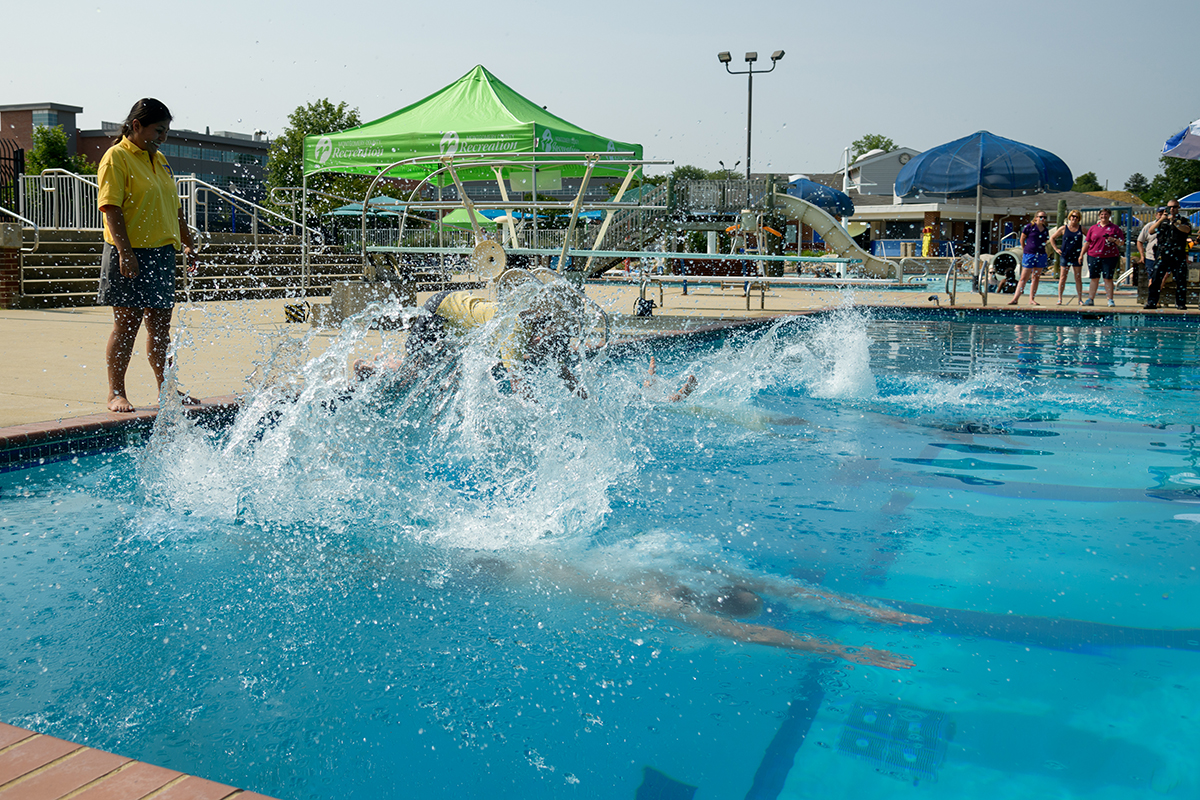
Travel up the Atlantic Coast to Montgomery County, and you’ll find some of the best swimming programs on the East Coast, according to Kelly Groff, president and chief executive officer of Visit Montgomery. The densely populated area (about one million residents within a space of 507 square miles) is a suburb of Washington, D.C., and it’s where five-time Olympic gold medalist Katie Ledecky grew up and trained.
The county also is home to four major aquatics venues, including the Kennedy Shriver Aquatic Center (which hosted training for the U.S. Olympic diving team prior to the 2012 Games), the Martin Luther King Jr. Swim Center, the Olney Swim Center and the Germantown Indoor Swim Center (which in February hosted the Landmark Conference’s 2020 Swimming & Diving Championships).
“The caliber of our facilities and how well they are taken care of separate Montgomery County,” Groff says. “Plus, our programs and meets are grooming future college and Olympic athletes.”
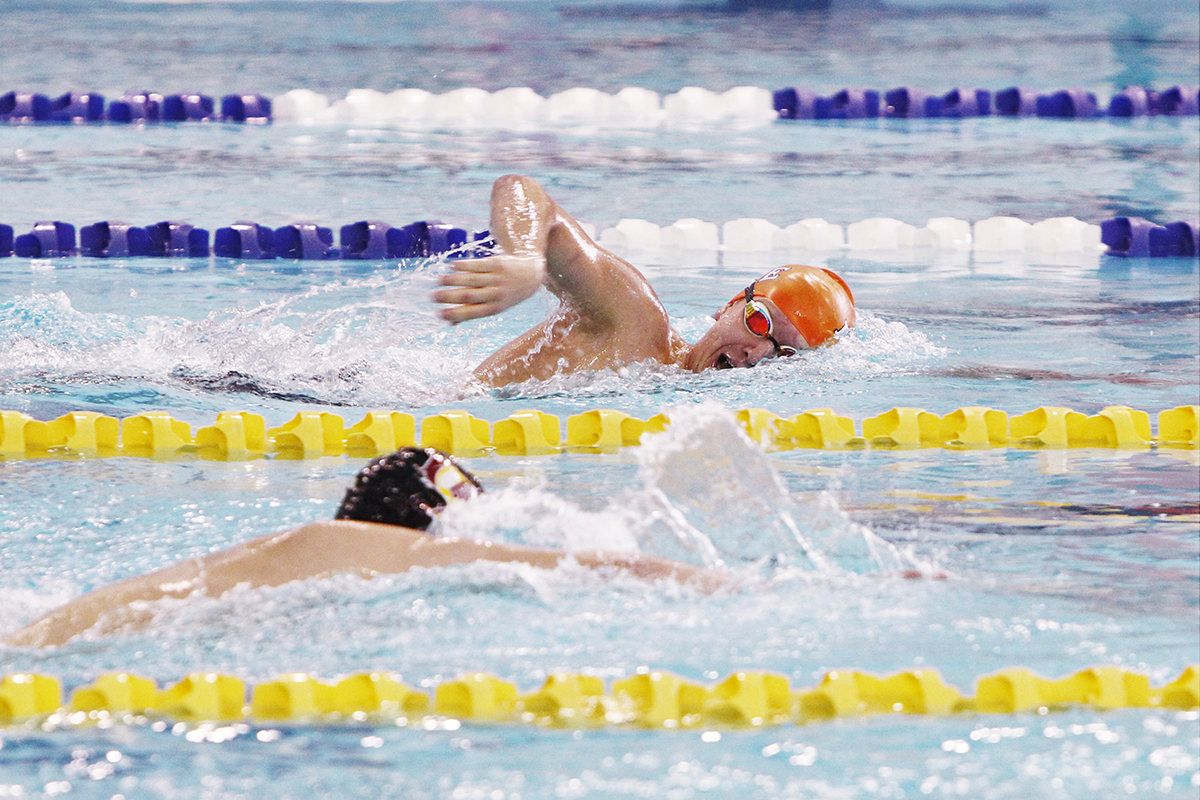
In April, groundbreaking is expected on a $26.3 million renovation and expansion of the Holland Community Aquatic Center. Years in the works, the project will include adding a new diving and lap pool to its 50-meter competitive pool area and increasing spectator seating to about 750, while also improving mechanical and air-quality components in alignment with sustainability goals. A warm-water leisure and lap pool for the community will be part of the project, too, as will an update to existing wellness spaces.
The facility originally was built in 1968, with an addition in 1998. The latest renovation and expansion (it was approved by voters in May 2019 and is expected to generate an estimated $7 million in economic impact) will ensure everyday community access to the center as the demand for simultaneous use increases.
Slated for completion in late 2021 or early 2022, the improvements will allow the facility to enhance all three of its core competencies with several community recreation opportunities, critical learn-to-swim programs and high-profile competitive events that already include state high school championships, NCAA Division III championships and USA Swimming meets.
“We’ll have the ability to run simultaneous meets for swimming and diving,” says Jack Huisingh, executive director of the Holland Community Aquatic Center. “That is something different.”
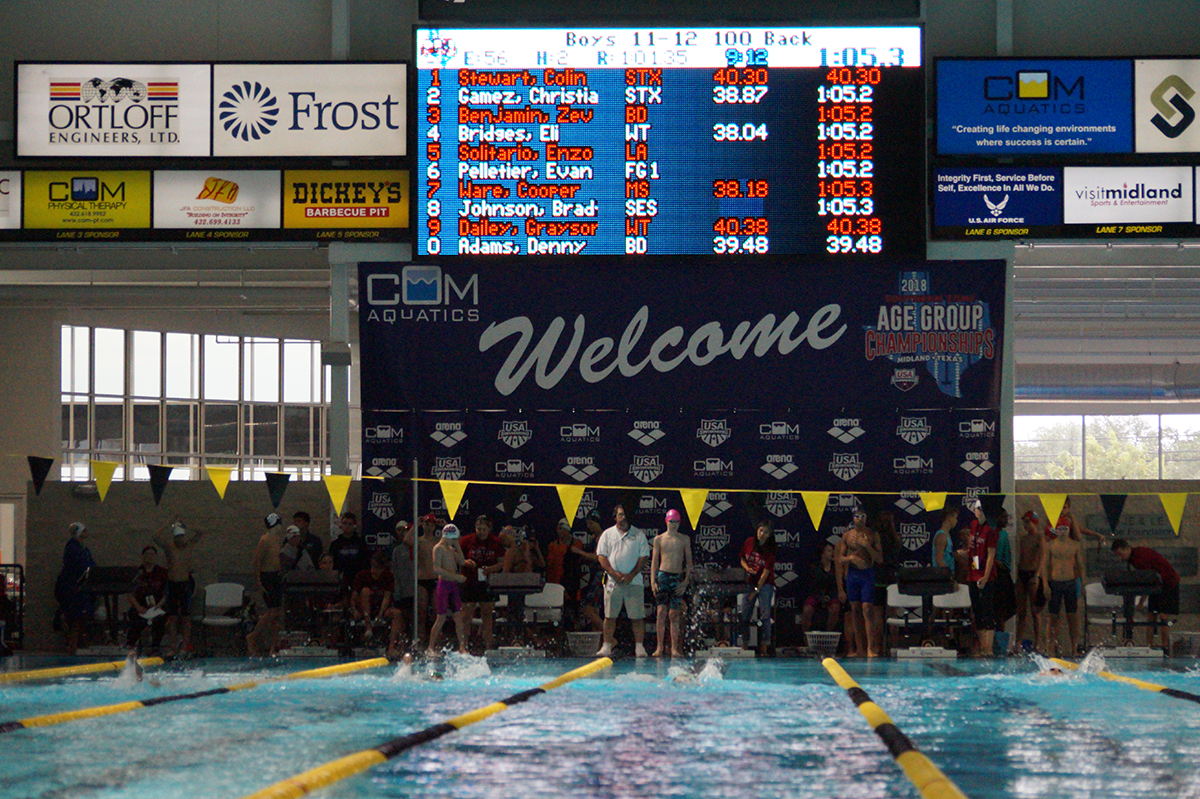
Another city reaping the benefits of an expanded aquatics facility is Midland, Texas, located on the state’s western plains and home of the City of Midland Aquatics Inc., or COM Aquatics. The organization, which is not affiliated with the city and dates back to 1967, is a nonprofit with seven pools all in one complex. It operates what Laura Retzer, business manager for COM Aquatics, calls “one of the most comprehensive aquatics facilities in the country.”
The latest COM Aquatics expansion is the FMH Foundation Natatorium, which opened in 2016 with a 50-meter long course pool that includes a warmup pool and a large courtyard designed to serve as a gathering space for swimmers and their teams.
“COM Aquatics turned Midland into a swimming powerhouse, and it has a legacy of producing world-class swimmers and divers,” says Lyndsey White, marketing director for VistiMidland. “We have a strong partnership with the facility, but it also serves the community in a lot of ways, including lessons, water aerobics and water therapy.”
COM Aquatics regularly hosts AAU events and the West Texas LSC Short Course Championships, as well as USA Junior Nationals, USA Diving Nationals, USA Swimming Zones and USA Diving Zones.
The complex also boasts a diving facility with 1- and 3-meter springboards, and 3-, 5-, 7- and 10-meter platforms. Seating capacity in the FMH Foundation Natatorium is approximately 700, while the diving facility holds about 750 spectators.
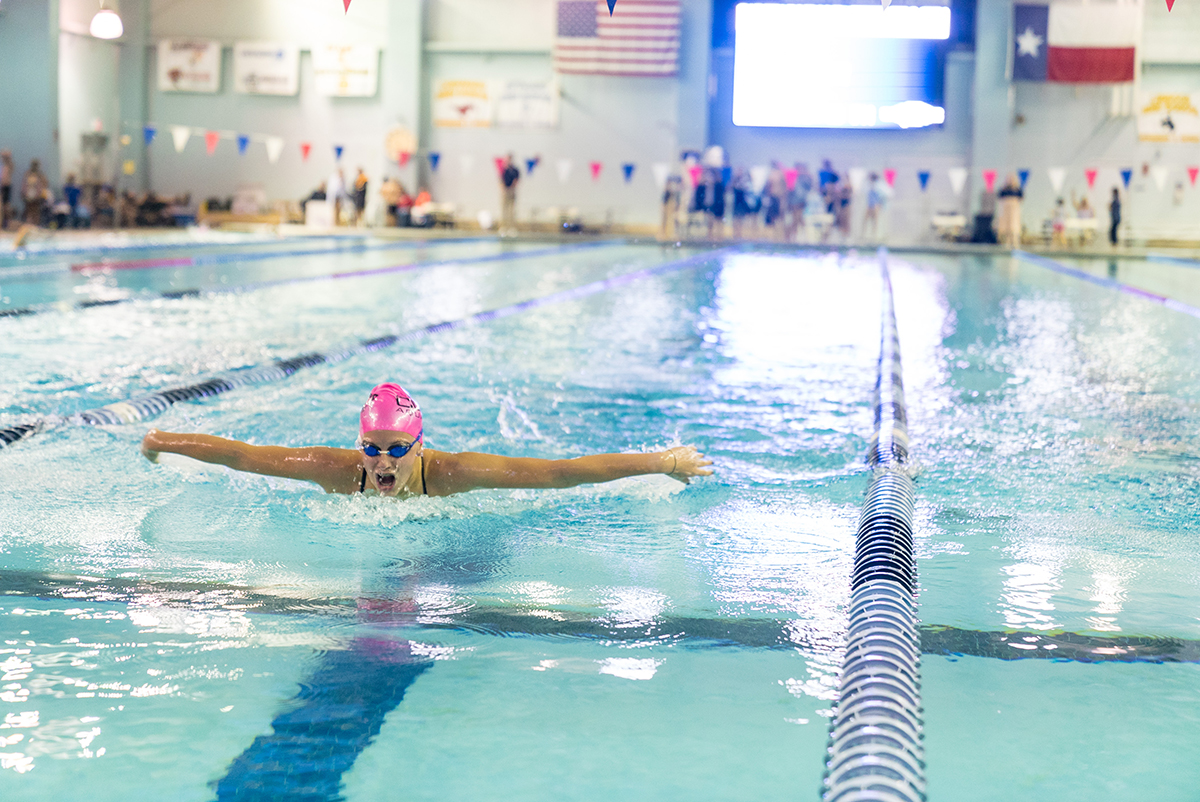
Drive a couple hours due north of Midland, and you’ll reach Lubbock, where the swimming and diving scene is consistently evolving, according to Scott Harrison, director of sports for the Lubbock Convention and Visitors Bureau. In fact, the Pete Ragus Aquatic Center will host the 2020 USA Diving Region 11 Championships in April.
That facility, owned and operated by the Lubbock Independent School District, offers two eight-lane pools separated by two 3-meter diving boards and three 1-meter diving boards. The natatorium, which has undergone two renovations, can seat almost 300 spectators and has hosted several USA Swimming regional meets and the University Interscholastic League’s high school swimming and diving regional championships.
“The venue can accommodate swimming and diving competitions at all levels,” Harrison says, adding that Southwest Aqua Sports is a privately owned facility with a swim club that is helping enhance Lubbock’s already-strong aquatics culture. SDM

